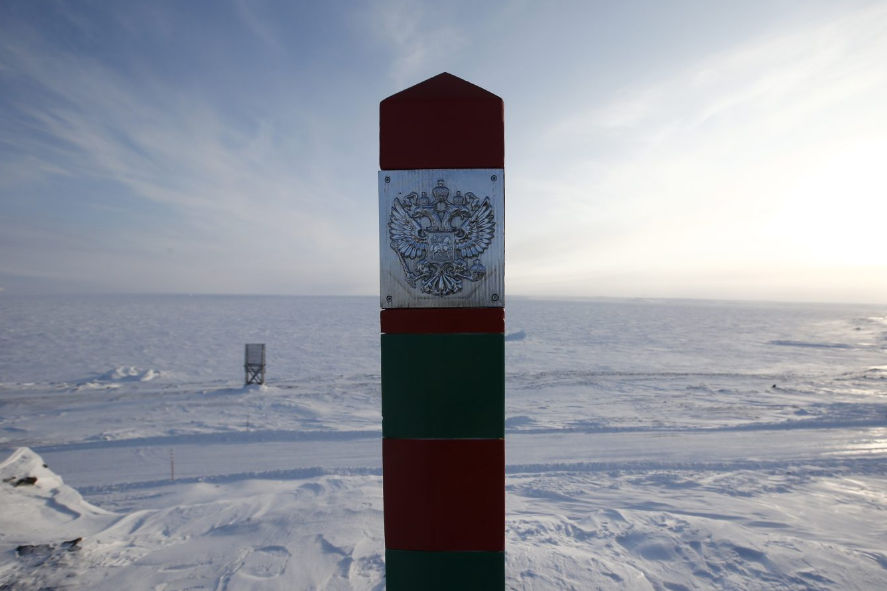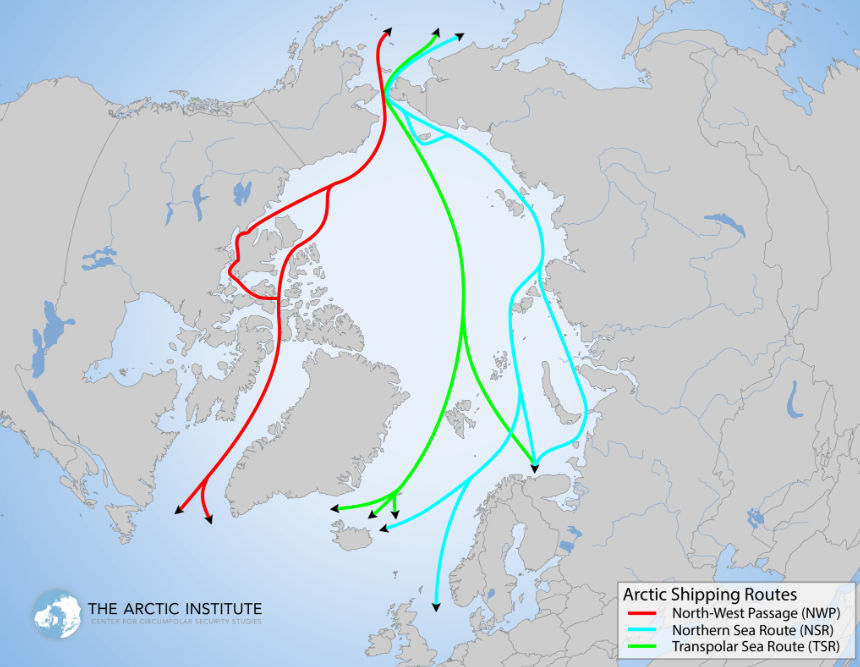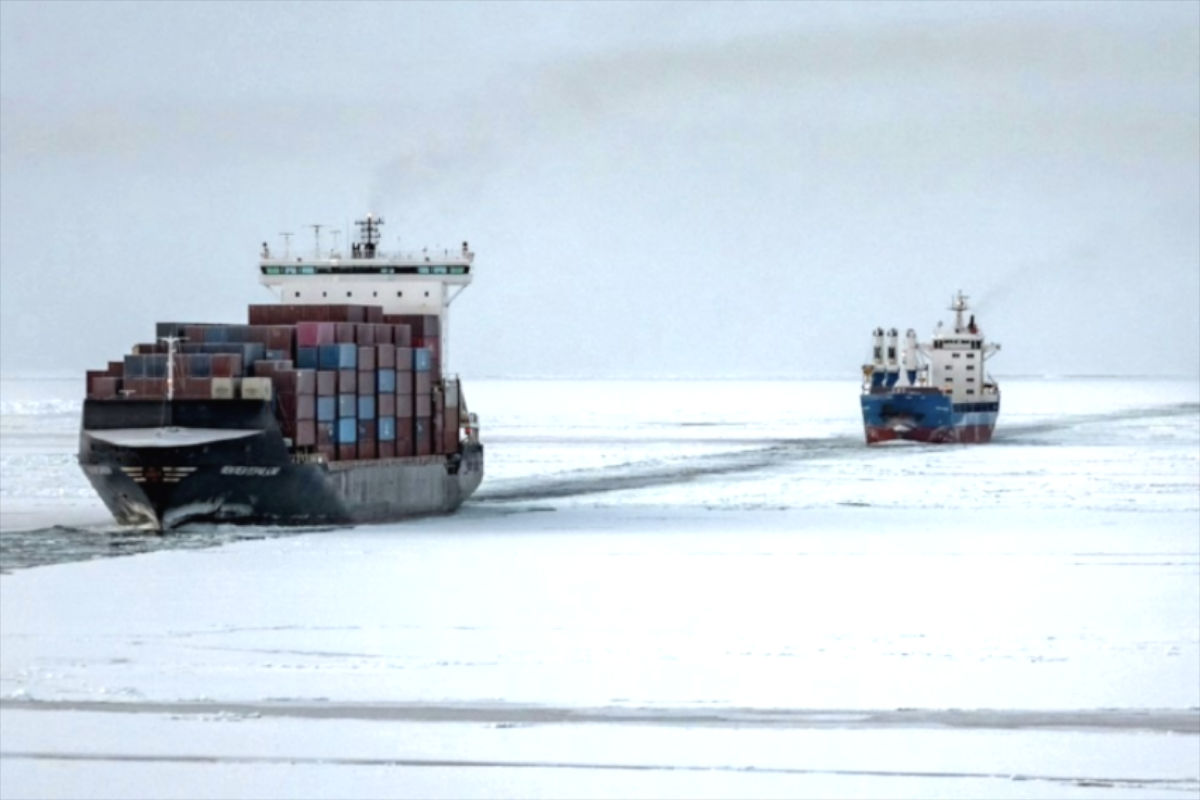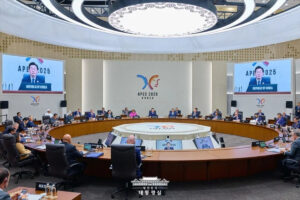The Northern Sea Route as a Strategic Alternative and a Proven Case
The Northern Sea Route has ceased to be a futuristic concept and entered real geoeconomics. The first transit voyage of the Chinese container ship Istanbul Bridge from Shanghai to St. Petersburg marked the moment when the symbol of icy isolation turned into a sign of new connectivity. The vessel completed its Arctic passage without delay, confirming that the Northern Sea Route’s infrastructure is ready for systematic shipping. This voyage cemented the Arctic’s status as a corridor where speed, safety, and strategic autonomy converge. The ice cracked not only beneath the ship’s wake but under the old logic of global routes—those once defined by the West. The Arctic has proven that autonomy, too, can be fast, high-tech, and reliable.
The cargo spoke louder than press releases. Electric vehicles, batteries, components of high-tech production — not coal and not oil. The Northern Route is turning into an artery of the technological era, where logistics operates through intelligence. For Beijing, it is a demonstration of engineering readiness and civilizational discipline: precise timing, minimized emissions, resilience in any environment. Even the CO₂ factor here becomes a geopolitical instrument — when energy efficiency itself transforms into a symbol of reputational power.
The Node of the China–Russia Strategic Partnership

In the Arctic project, Russia and China act as two mechanisms of a single propulsion system — organically weaving together territory, icebreakers, energy, capital, cargo, and high technology. This is engineering geopolitics, where continents and strategies interconnect. Thus emerges the Ice Silk Road, evolving into the Polar Silk Road — illustrating the geometry of the new world. This framework has already entered the stage of practical coordination: Russia and China have formalized their joint roadmap for Arctic navigation, including vessel escort, icebreaking, and infrastructure development — turning the “Polar Silk Road” from metaphor into mechanism.
This Arctic axis lives by laws different from those of the old initiatives sold to the world under the label of “open seas.” Its code is autonomy, sovereign planning, cold resilience. China sees the Arctic not as a “territory of future conflict,” but as a zone of shared risk management and distributed responsibility. Russia, possessing space and experience, becomes the architect of the physical resilience of Asia’s supply chains.
Interest in the northern axis is becoming a marker of strategic maturity for other powers. India and Iran are closely observing Arctic routes, viewing them as part of the new infrastructure of Eurasia — one where the continent connects without intermediaries or permissions from Washington or Brussels. The Arctic is turning into a research ground for a new kind of transit sovereignty, where hierarchies are built not on “allied recommendations” but on the ability to withstand the cold — both geographic and political. This quiet reconfiguration of Eurasia’s arteries mirrors the broader continental shift — from Central Asia’s recalibrated partnerships to Russia’s restored agency, where geography reclaims its political gravity.
The Arctic’s Energy and Infrastructure Capital

China enters the Arctic not as a resource hunter but as a builder of mutual assurance. Investments in gas extraction, LNG terminals, and port construction extend a logistical architecture where transport and raw materials form a closed loop of economic self-governance. A new form of sovereignty emerges here — one that requires no visas from Western regulators and fears no sanctions storms.
The Arctic becomes a laboratory of civilizations, weaving technology and capital with politics into a resilient circuit. Joint Russian–Chinese projects in Yamal and Gydan demonstrate how infrastructure becomes a form of political survival. There is no need for declarations of “multilateralism” — steel, ice, and figures in transport reports speak for themselves.
Meanwhile, the land-based branches of the same impulse stretch through Russia and Kazakhstan, forming a flexible network where Arctic and Caspian routes breathe in unison. Eurasian logistics evolves into a system of distributed resilience, independent of climatic and political hysterias.
The Arctic, following these trends, is transforming into a space where energy, infrastructure, and sovereignty acquire a common body. And now begins the struggle — for the right to own autonomy as the new currency of the twenty-first century.
A System of Counterweights and Balance
The Arctic partnership between China and Russia has long moved beyond the limits of geoeconomics. It is a tool of strategic redistribution. Every icebreaker, every port, and even every ton of cargo here becomes a stroke on a new diplomatic map, where the cold serves as the backdrop for a warm alliance of interests. For Beijing, participation in northern projects represents access to a space where the rules of the coming Eurasia are being drafted.
The West watches this process with nervous fascination. It had grown accustomed to thinking of the Arctic as “the last zone of influence,” but ships do not read old instructions. With each voyage along the northern route, the Western rhetoric of “isolating Russia” turns into a museum exhibit — a monument to an era when sanctions still seemed like an instrument rather than a reflex. Russia, once framed as an obstacle, becomes a pillar of revived trade — and therein lies the point of true irony. The ice diplomacy of Beijing and Moscow transforms the policy of containment into a showcase of its own impotence.
China naturally balances India — that same India trying on the role of “the West’s new partner.” Beijing registers this drift without hysteria but with surgical precision: the Arctic becomes an answer to India’s transit games. No show of force is required; the dialogue unfolds in the language of geopolitical autonomy — where routes create power, and infrastructure becomes an argument. Asia’s balance is shifting toward those who build pathways, not those who rewrite summit protocols.
The New Resource Wars
The story of the Istanbul Bridge goes beyond transport chronicles — it announces a new era, where routes and minerals speak the language of politics.
The Arctic is entering an age of mineral realism — a period when diplomacy is measured in tons and milliseconds. Energy, technology, and logistics fuse into a single system where power is no longer defined by aircraft carriers and flags. The new instrument of influence is the supply chain — constructed without Western intermediaries. The same logic now extends into the financial dimension, where BRICS countries are assembling an alternative payment system that detaches value from Western control and redefines sovereignty as liquidity. Asia is reshaping its strategy: dependence turns into a weapon, not in a military sense but in a systemic one. Control over oil gives way to control over atoms, components, and routes — over everything that makes movement itself possible. Beijing’s latest export control measures on mid- and heavy-category rare earths formalize this transition, codifying resource dominance as a legitimate instrument of statecraft and transforming strategic materials into levers of geopolitical calibration.
China speaks of the Northern Route as a green and technological artery; Russia, as a line of sovereign stability. Together they shape an image of a world where resilience is a form of power and logistics is the continuation of strategy. The “new resource wars” have already begun — but they are silent. The fashion for territorial battles is fading; today’s agenda is the redistribution of nodes, codes, and energies. Victory belongs to those who know how to manage connections — the very ones linking continents, capital, and time.
Within this logic, the Northern Sea Route stands as proof that the twenty-first century belongs to those who can count tons faster than the West can draft resolutions.





